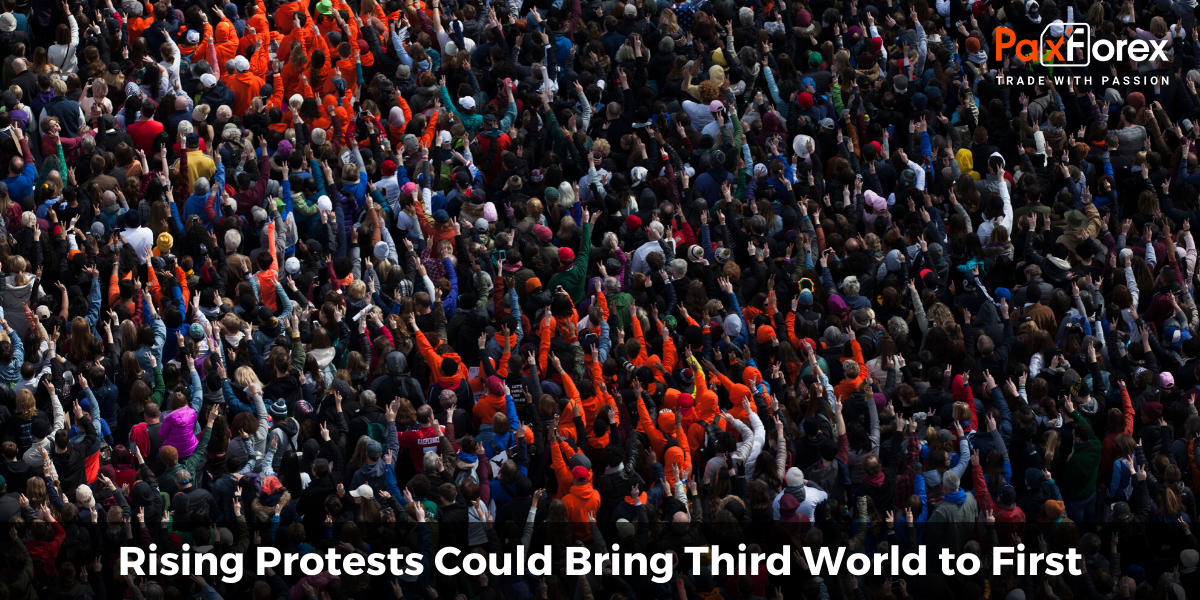
Millions of rallies and protest marches that had been affecting Turkey, Egypt, Brazil and other major developing countries in recent months could be the key to their economic bright tomorrow.
It takes a lot of courage to say that emerging markets are not much riskier than developed ones, while on the Egypt's streets a revolution continues, and in Turkey and Brazil had just died down a wave of strong protests. Now rallies weaken and destabilize developing countries but in the end they can lead to greater democratization, which will contribute to a dizzying growth.
This also applies to the Forex market as it’s a big part of the world’s economy as well as a significant part of any national one. We are seeing a growing interest in this type of investment from the huge part of the people of developing countries. Moreover, it is not just an interest to “easy money”, which does not exist in reality. This interest has a strong base and causes a strong desire to study the market in depth, applying the methods of quite in-depth market analysis.
Sounds too optimistic or naive? OK, let's take a more detailed look at why the protests could lead to very significant changes in the economies of developing countries. But we need to make a reservation that there may be one problem for these successful changes - politicians can prevent them. If their reaction to the mass protests will be suppression and violence, then it removes the changes to indefinite times.
The correct solution for the governments would be meeting the protesters and listening to them. But such expensive ideas like the FIFA World Cup in Brazil or the Olympics should be abandoned by leaders of such countries.
Over the past 10 years, the center of gravity of the world economy has shifted to developing countries. The rapid growth of GDP in China and India has led to the fact that the global middle class has increased significantly. More than half a billion people were able to break out of the poverty trap and began to receive more than two dollars a day.
So, here are step by step reasons for changes we talked before:
According to the forecasts of economists, in 2030 70% of middle class spending on consumption (56 trillion dollars) will come from emerging markets.
Young people from developing economies are full of reasons for angst.
Income gap and youth unemployment are at their peak.
Developing countries today are faced with the problem of the division of the population into several layers. In the cities settled educated and modern middle class, and those in rural areas still survive under the laws of a century ago. While the young urban class had time to get rich and now asks for fair elections, the villagers are still struggling with poverty.
Because in these states remains a poor education, poor healthcare systems and terrible infrastructure, the citizens have to pay for their own private schools, hospitals and transport. The prices for these services are constantly growing. After all, the middle class is growing too but the number of schools and hospitals isn’t increasing.
Rural people can do nothing but to use what is provided by the state. This further increases the gap between the different layers of the population.
Meanwhile, the governments don’t spend money to solve these problems but they are willing to spend them on image-making but economically senseless projects. For example, in Brazil, public expenditure on health accounted for only 4% of the GDP but to host the World Cup it have already spent $ 3 billion.
The discrepancy between the expectations of the citizens and the quality of public services was the cause of the protests. Demonstrations were held in Brazil under the slogan: "Stadiums from the first world, schools and hospitals from the third one".
However, many economists are not worried about the future of catch-up countries. Their prospects are much better than in the developed economies. A large percentage of the elderly and the high level of government debt are dragging down Europe and the United States. Protests of a young generation in developing countries can lead to big political and economical reforms that will lead to higher rates of economic growth.
The growth of the young population increases GDP.
In addition, developing countries have the low level of public debt, which will allow them in the future to spend a lot of money to projects that will stimulate GDP growth.
The nearest times will be restless for the young markets, but in the end they may come out of the protests being more confident than the developed countries.







